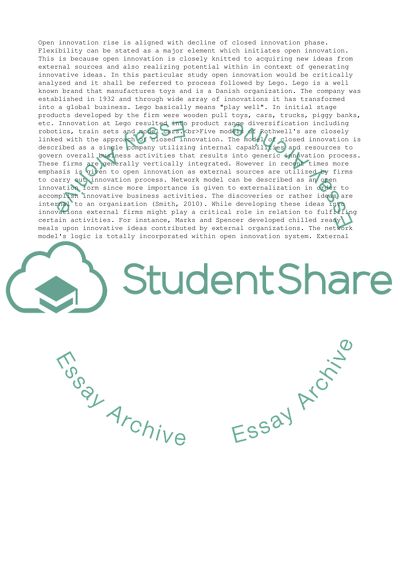Cite this document
(Critically discuss what is meant with open innovation With reference Essay, n.d.)
Critically discuss what is meant with open innovation With reference Essay. https://studentshare.org/management/1855199-critically-discuss-what-is-meant-with-open-innovation-with-reference-to-the-firm-lego-discuss-the-extent-to-which-open-innovation-plays-a-role-in-legos-innovation-process
Critically discuss what is meant with open innovation With reference Essay. https://studentshare.org/management/1855199-critically-discuss-what-is-meant-with-open-innovation-with-reference-to-the-firm-lego-discuss-the-extent-to-which-open-innovation-plays-a-role-in-legos-innovation-process
(Critically Discuss What Is Meant With Open Innovation With Reference Essay)
Critically Discuss What Is Meant With Open Innovation With Reference Essay. https://studentshare.org/management/1855199-critically-discuss-what-is-meant-with-open-innovation-with-reference-to-the-firm-lego-discuss-the-extent-to-which-open-innovation-plays-a-role-in-legos-innovation-process.
Critically Discuss What Is Meant With Open Innovation With Reference Essay. https://studentshare.org/management/1855199-critically-discuss-what-is-meant-with-open-innovation-with-reference-to-the-firm-lego-discuss-the-extent-to-which-open-innovation-plays-a-role-in-legos-innovation-process.
“Critically Discuss What Is Meant With Open Innovation With Reference Essay”. https://studentshare.org/management/1855199-critically-discuss-what-is-meant-with-open-innovation-with-reference-to-the-firm-lego-discuss-the-extent-to-which-open-innovation-plays-a-role-in-legos-innovation-process.


